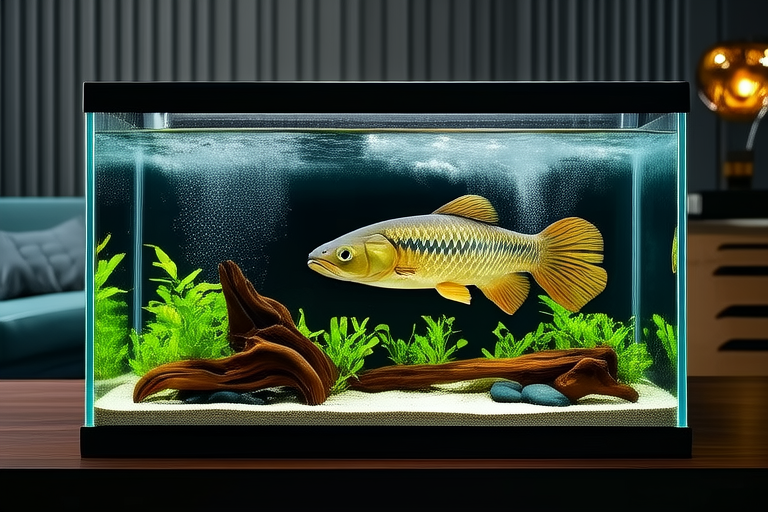
The Ultimate Guide to Feeding and Caring for Your Arowana
Introduction
Welcome to the world of arowanas! These magnificent creatures are known for their striking appearance and impressive size, making them a favorite among aquarium enthusiasts. Proper care and feeding are essential to ensure that your arowana thrives in its aquatic environment. This guide will cover all aspects of arowana care, from diet and feeding schedules to tank setup and water quality maintenance.
Optimal Diet
Arowanas are carnivorous fish that require a balanced diet rich in protein. Their natural diet consists of insects, small fish, crustaceans, and other aquatic organisms. In captivity, it’s important to provide a similar variety of food to meet their nutritional needs.
- Frozen Foods: Offer high-quality frozen foods such as bloodworms, brine shrimp, and mysis shrimp. These are readily available at pet stores and can be easily stored.
- Livestock: Introduce live foods like feeder fish (guppies, minnows) or insects (crickets, grasshoppers) occasionally to mimic their natural hunting behavior.
- Dry Foods: Use high-protein pellets specifically formulated for large carnivorous fish. These pellets can be a convenient and nutritious option.
- Variety: Rotate between different types of food to prevent dietary deficiencies and keep your arowana interested in mealtime.
Feeding Schedules
Establishing a consistent feeding schedule is crucial for the health and well-being of your arowana. Overfeeding can lead to poor water quality and obesity, while underfeeding may result in malnutrition.
- Frequency: Feed adult arowanas once or twice daily. Younger arowanas may require more frequent feedings, up to three times a day.
- Portion Control: Provide only what the fish can consume within five minutes. Excess food should be removed promptly to maintain water quality.
- Observation: Monitor your arowana’s eating habits and adjust portions accordingly. If your fish is showing signs of overeating or underfeeding, make necessary adjustments to their diet.
Water Quality Maintenance
Excellent water quality is vital for maintaining the health of your arowana. Poor water conditions can lead to stress, disease, and even death. Regular monitoring and maintenance are necessary to ensure a clean and healthy environment.
- Water Parameters: Maintain the following parameters: pH 6.5-7.5, hardness 8-12 dGH, and temperature 24-30°C (75-86°F).
- Filteration: Use a powerful external filter capable of handling multiple times the volume of your tank per hour. This helps remove waste and debris, keeping the water clean.
- Water Changes: Perform weekly water changes of about 20% to maintain optimal water quality. Always use dechlorinated water treated with an appropriate conditioner.
- Aeration: Ensure adequate oxygen levels by providing proper aeration through air stones or surface agitation.
Tank Setup Requirements
Arowanas are active swimmers and need ample space to move around comfortably. The tank setup should provide both physical and mental stimulation to promote overall health.
- Tank Size: For a single adult arowana, a minimum tank size of 240 gallons is recommended. Larger tanks are ideal for multiple arowanas or if you plan to keep other species.
- Cover: Arowanas are known jumpers; therefore, the tank should have a secure lid or cover to prevent escapes.
- Hiding Places: Provide hiding spots such as caves or driftwood to offer shelter and reduce stress.
- Decorations: Use sturdy decorations that won’t be uprooted during swimming. Avoid sharp objects that could injure your arowana.
Temperature Control
Consistent temperature control is essential for the well-being of your arowana. Fluctuations can cause stress and weaken the fish’s immune system.
- Heaters: Use reliable aquarium heaters to maintain the desired temperature range of 24-30°C (75-86°F). Place the heater in a position where it won’t be knocked over.
- Thermometers: Install several thermometers at different locations within the tank to monitor temperature variations accurately.
- Insulation: Consider insulating the tank to prevent rapid temperature changes, especially in areas with extreme climate conditions.
Common Health Issues
Despite proper care, arowanas may still encounter health problems. Early detection and treatment are key to managing these issues effectively.
- Fungal Infections: Fungi often attack weakened fish. Symptoms include white cotton-like growths on the body. Treat with antifungal medications and improve water quality.
-
- Bacterial Infections: Bacteria can cause ulcers, fin rot, or redness. Antibiotics may be necessary, along with improved hygiene practices.
- Parasites: External parasites like ich can cause irritation and scratching. Quarantine infected fish and treat with appropriate medication.
- Swim Bladder Disorders: This condition affects buoyancy and balance. It can be caused by overfeeding or internal injuries. Adjust diet and consult a veterinarian if needed.
Tips for Handling and Bonding with the Fish
Interacting with your arowana can strengthen the bond between you and your pet, enhancing its overall well-being.
- Feeding Interaction: Hand-feed your arowana to encourage interaction. Be cautious when placing your hand near the tank to avoid accidental injury.
- Visual Stimulation: Place mirrors outside the tank to stimulate the arowana’s natural predatory instincts and provide entertainment.
- Regular Observation: Spend time observing your arowana daily to familiarize yourself with its behavior patterns. This will help you notice any changes that might indicate illness.
- Patience: Building trust takes time. Be patient and consistent in your interactions to foster a strong relationship.
Conclusion
Caring for an arowana requires dedication and attention to detail. By following this comprehensive guide, you’ll be able to provide your fish with the best possible care, ensuring it leads a long and healthy life. Remember, each arowana is unique, so adapt these guidelines to suit your pet’s specific needs. With proper care, you’ll enjoy the beauty and grace of this remarkable fish for years to come.




